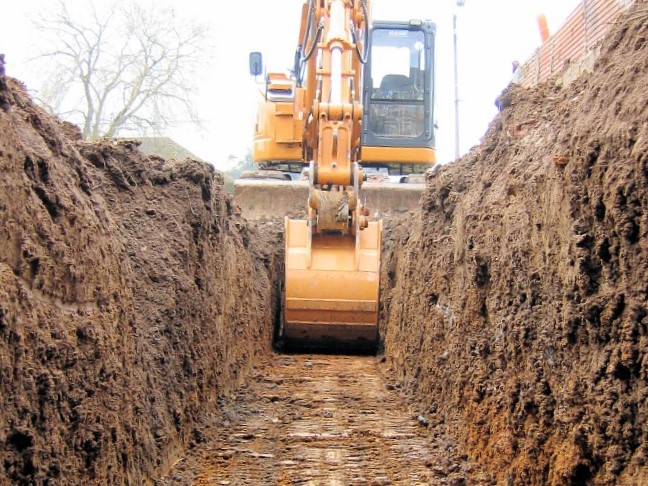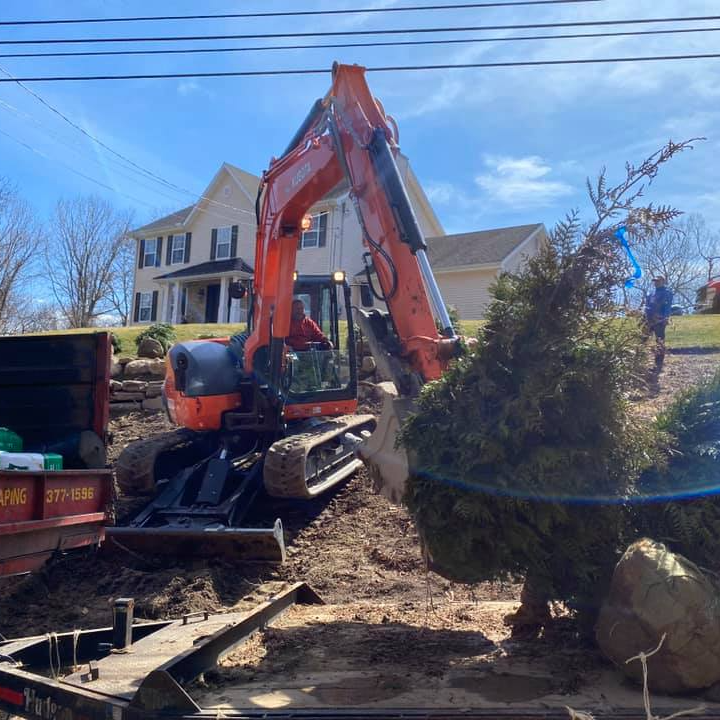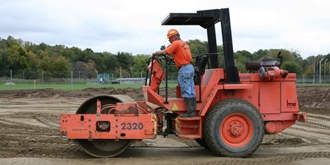Extensive Expedition: The Scientific Research Behind Superior Excavation Practices
The realm of excavation methods is a domain name where scientific research intertwines with workmanship to unearth the mysteries hidden underneath the planet's surface. From old hand tools to modern-day hydraulic excavators, the evolution of excavation methods has actually been a testimony to human ingenuity and technological developments. What really sets superior excavation techniques apart is a deep understanding of geological concepts, coupled with the utilization of cutting-edge devices and methodologies. By exploring the science behind these practices, we can reveal the tricks that lie beneath our feet and value the precision and proficiency that go into every dig.
Evolution of Excavation Strategies
Throughout history, the evolution of excavation strategies has played an important role ahead of time building and construction methods and historical explorations. From the basic devices utilized by our ancestors to the advanced machinery used in contemporary times, the development of excavation techniques has significantly changed how we come close to different projects.
In old times, hands-on labor with basic devices such as wheelbarrows, pickaxes, and shovels was the primary method of excavation. This labor-intensive procedure limited the depth and extent of excavations, typically causing sluggish progression and restricted accessibility to certain sites. Nevertheless, as worlds advanced, so did the methods and tools utilized for excavation.
The Industrial Change noted a transforming factor in excavation techniques with the intro of steam-powered equipment. In modern times, technology plays a critical function in excavation, with improvements like General practitioner systems, drones, and 3D scanning improving accuracy and effectiveness in the field.
Function of Innovation in Excavation

The integration of sophisticated modern technology has fundamentally changed the area of excavation, boosting precision and performance to unmatched levels - dump truck companies in ohio. One of the essential technical innovations that has substantially impacted excavation methods is the application of GPS systems.
Moreover, the advent of 3D modeling and simulation software application has structured the preparation process for excavation tasks. Drivers and engineers can now picture the entire excavation process prior to breaking ground, maximizing and determining potential obstacles process. Together with this, the execution of drones in excavation tasks has helped with aerial studies, volumetric dimensions, and site examinations with unrivaled rate and accuracy.
Geological Concepts in Excavation
An understanding of geological principles is important for guaranteeing the structural honesty and security of excavation websites. Geological elements play an essential duty in figuring out the feasibility and security of excavation tasks (lancaster trenching). One vital geological concept to think about is the sort of soil or rock present at the website. Different soil types, such as crushed rock, clay, or sand, have differing degrees of security and need different excavation methods. Natural dirts like clay may require additional assistance to protect against collapses, while sandy dirts may be prone to disintegration throughout excavation.
Furthermore, the geological structure of the area, consisting of faults, cracks, and rock developments, need to be very carefully assessed to identify prospective dangers and Recommended Site difficulties. Digging deep into near fault lines or unsteady rock formations can cause instability and potential dangers. By conducting thorough geological studies and analysis, excavators and designers can establish strategies to alleviate risks and make sure the effective completion of excavation tasks. Ultimately, including geological principles right into excavation practices is vital for achieving secure, efficient, and lasting outcomes.

Latest Devices for Excavation
In the realm of excavation techniques, contemporary innovations in tools have revolutionized the efficiency and accuracy of excavation procedures. Among the current devices making waves in the market is making use of drones geared up with advanced imaging technology. These drones can provide detailed airborne studies of excavation sites, providing real-time data on topography and potential hazards. This information help in far better preparation and decision-making during the excavation process.
An additional cutting-edge device acquiring appeal is the execution of 3D printing innovation for producing customized excavation equipment. This enables the production of specialized tools that are customized to the certain demands of a project, boosting effectiveness and reducing downtime.
Moreover, developments in products science have caused the development of more powerful and a lot more durable excavation devices. excavating ohio. Tungsten carbide-tipped excavator add-ons, as an example, deal exceptional efficiency in difficult ground problems, enhancing productivity on-site
Scientific research's Effect on Excavation Practices

Furthermore, advancements in materials science have led to the production of more powerful, much more durable excavation devices and devices. The usage of composite materials in shovels and diggers has boosted their performance and long life, eventually increasing performance on excavation websites. Additionally, clinical research on dirt auto mechanics and geotechnical engineering has provided beneficial insights right into soil behavior, permitting excavation experts to make informed choices relating to excavation methods and dirt stabilization strategies. In general, science proceeds to drive technology and enhancement in excavation methods, making excavation projects more effective, economical, and sustainable.

Final Thought
To conclude, the evolution of excavation techniques has actually been substantially affected by improvements in innovation and a deeper understanding of geological concepts. The current devices and devices used in excavation have actually enhanced efficiency and precision in the area. The application of scientific knowledge has actually substantially enhanced excavation techniques, causing much more effective and lasting techniques for excavating numerous types of materials.
In the realm of excavation practices, contemporary innovations in devices have actually reinvented the effectiveness and precision of excavation you could try these out procedures. By leveraging clinical principles, the excavation industry has been able to substantially improve performance, precision, and security in excavation processes. GPR enables excavation groups to non-invasively check and map subsurface structures, utilities, and possible dangers, enabling them to plan excavation tasks with higher precision and reduced threat of mishaps.
Additionally, clinical research study on soil technicians and geotechnical design has given useful insights right into soil behavior, permitting excavation professionals to make enlightened decisions concerning excavation approaches and soil stablizing methods. In general, scientific research proceeds to drive innovation and renovation in excavation practices, making excavation tasks a lot more efficient, cost-efficient, and sustainable.